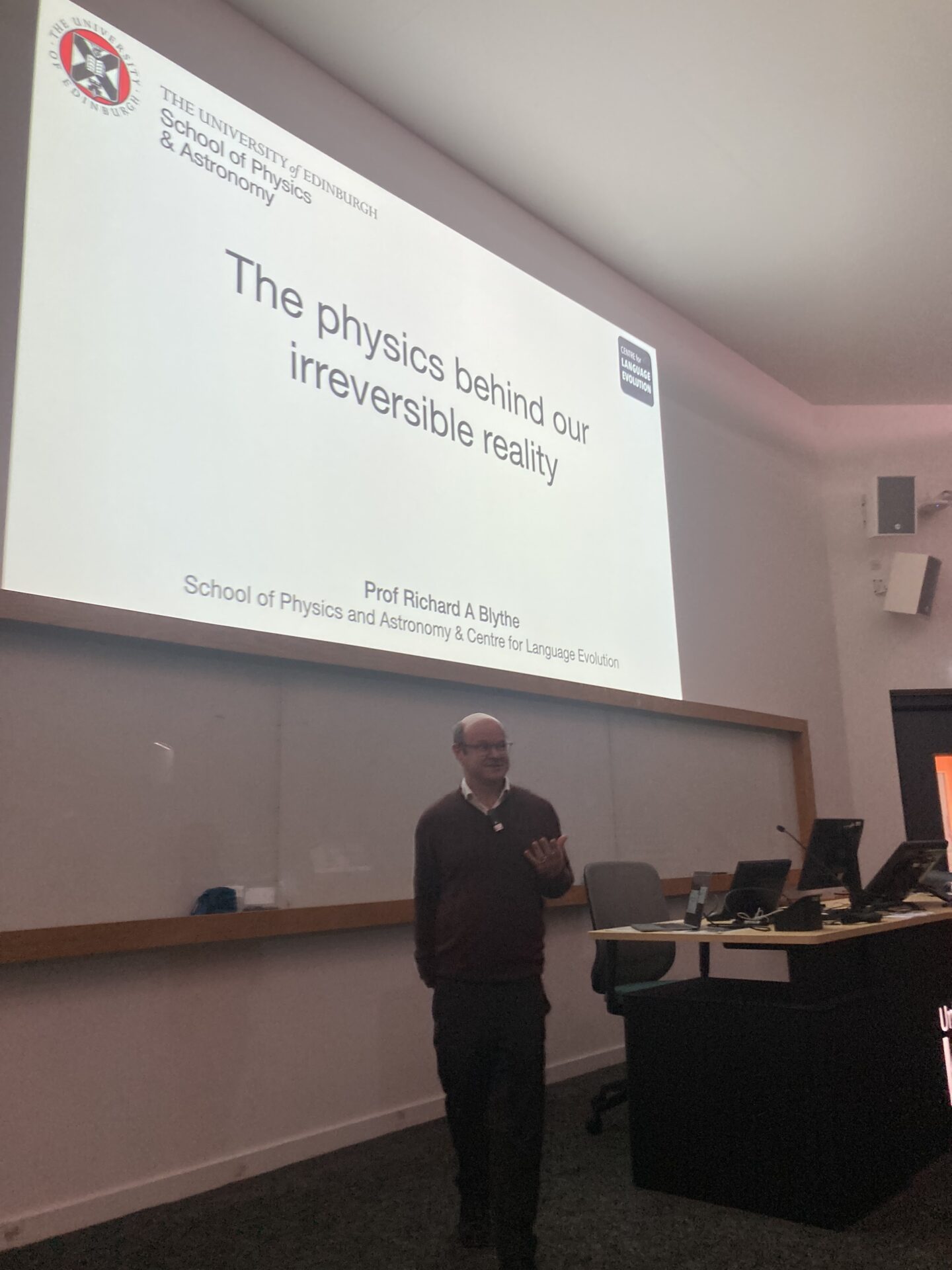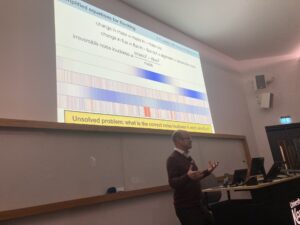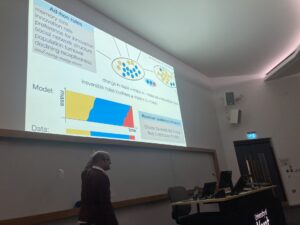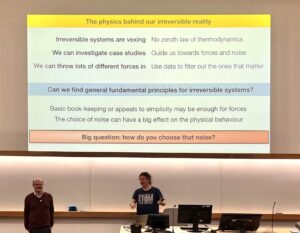
Kent Physics Centre warmly welcomed Professor Richard Blythe, from the University of Edinburgh, for his talk "The physics behind our irreversible reality"
Kent Physics Centre warmly welcomed Professor Richard Blythe, from the University of Edinburgh, for his talk “The physics behind our irreversible reality“, with over 30 attendees enjoying the talk.
Our reality is comprised of many complex systems, composed of large numbers of interacting bodies; the planets in the solar system, pedestrians on the street, or atoms in a material. It is the remit of the humble physicist to try and describe these systems through the language of mathematics. For three or more interacting bodies, the system can no longer be described by a neat set of equations. How then, can it be possible to study a system of a hundred or more parts, like a flock of birds? This is precisely what Professor Richard Blythe of the University of Edinburgh discussed in his talk “The physics behind our irreversible reality”.
Professor Blythe’s research concentrates on modelling and understanding the physics of complex systems, in particular, those far away from equilibrium. Some recent examples of his research have looked at the murmuration (flocking) of starlings and the evolution of language, which share a surprising closeness.
One may have heard the joke that, to a physicist, all cows are spheres. Whilst this may be found in undergraduate textbooks, it gets at something deeper. Depending on the problem, the specifics of a cow’s geometry aren’t essential, and one may learn a great deal from approximating a cow as a sphere. The spherical cow hypothesis can be tested and refined, based on experimental measurements. Understanding where the interesting physics comes from (adding legs to the cow, or elongating the sphere for example), allows these complex systems to be distilled down to their essential features.

Understanding the murmuration of starlings began with a simple model: each bird moves in the same direction as the majority of its neighbours (say, left or right). This on its own, doesn’t give any flocking behaviour; the birds act somewhat randomly. Adding just a few extra terms, or behaviours, to this simple model sees the emergence of flocking behaviour; the essential physics has been emerged.
>In a similar way, the evolution of language can be studied, following the popularity and use of certain words through time and across cultures. Individuals making changes within a group can soon propagate through to other groups, and to language as a whole. The model constructed for this evolution, and its predictions in variation over time, can then be compared to literature across cultures and shows remarkable agreement.

All of this is to say, Professor Blythe demonstrated how complex emergent behaviours can arise from models that capture the interesting physics, while still being simple enough to understand.

Please join us on the 6th May for “How sunglasses can help guide surgery” by Dr Danielle Harper of the University of Cambridge.